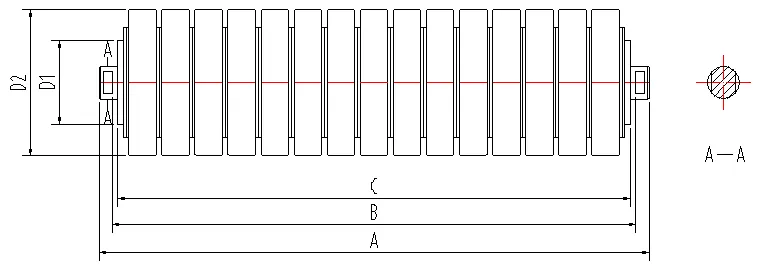 Afrikaans
Afrikaans  Albanian
Albanian  Amharic
Amharic  Arabic
Arabic  Armenian
Armenian  Azerbaijani
Azerbaijani  Basque
Basque  Belarusian
Belarusian  Bengali
Bengali  Bosnian
Bosnian  Bulgarian
Bulgarian  Catalan
Catalan  Cebuano
Cebuano  Corsican
Corsican  Croatian
Croatian  Czech
Czech  Danish
Danish  Dutch
Dutch  English
English  Esperanto
Esperanto  Estonian
Estonian  Finnish
Finnish  French
French  Frisian
Frisian  Galician
Galician  Georgian
Georgian  German
German  Greek
Greek  Gujarati
Gujarati  Haitian Creole
Haitian Creole  hausa
hausa  hawaiian
hawaiian  Hebrew
Hebrew  Hindi
Hindi  Miao
Miao  Hungarian
Hungarian  Icelandic
Icelandic  igbo
igbo  Indonesian
Indonesian  irish
irish  Italian
Italian  Japanese
Japanese  Javanese
Javanese  Kannada
Kannada  kazakh
kazakh  Khmer
Khmer  Rwandese
Rwandese  Korean
Korean  Kurdish
Kurdish  Kyrgyz
Kyrgyz  Lao
Lao  Latin
Latin  Latvian
Latvian  Lithuanian
Lithuanian  Luxembourgish
Luxembourgish  Macedonian
Macedonian  Malgashi
Malgashi  Malay
Malay  Malayalam
Malayalam  Maltese
Maltese  Maori
Maori  Marathi
Marathi  Mongolian
Mongolian  Myanmar
Myanmar  Nepali
Nepali  Norwegian
Norwegian  Norwegian
Norwegian  Occitan
Occitan  Pashto
Pashto  Persian
Persian  Polish
Polish  Portuguese
Portuguese  Punjabi
Punjabi  Romanian
Romanian  Russian
Russian  Samoan
Samoan  Scottish Gaelic
Scottish Gaelic  Serbian
Serbian  Sesotho
Sesotho  Shona
Shona  Sindhi
Sindhi  Sinhala
Sinhala  Slovak
Slovak  Slovenian
Slovenian  Somali
Somali  Spanish
Spanish  Sundanese
Sundanese  Swahili
Swahili  Swedish
Swedish  Tagalog
Tagalog  Tajik
Tajik  Tamil
Tamil  Tatar
Tatar  Telugu
Telugu  Thai
Thai  Turkish
Turkish  Turkmen
Turkmen  Ukrainian
Ukrainian  Urdu
Urdu  Uighur
Uighur  Uzbek
Uzbek  Vietnamese
Vietnamese  Welsh
Welsh  Bantu
Bantu  Yiddish
Yiddish  Yoruba
Yoruba  Zulu
Zulu Types of Pulleys in Belt Conveyors | Comprehensive Guide
Types of Pulleys in Belt Conveyors
In the realm of industrial material handling, belt conveyors play a crucial role in efficiently transporting goods across various distances. Central to the operation of these conveyors are pulleys, which are essential components that facilitate the movement of the conveyor belt. Understanding the different types of pulleys used in belt conveyors is vital for optimizing performance and ensuring safety.
1. Drive Pulley The drive pulley, often located at the head or discharge end of the conveyor, is responsible for powering the belt. It is driven by a motor that provides the necessary torque to move the belt. Drive pulleys are usually crowned or tapered to help maintain belt alignment and prevent slippage.
2. Idler Pulley Idler pulleys support the belt and help maintain its tension, ensuring it runs smoothly. They are typically found along the return side of the conveyor. Idler pulleys come in various designs, such as flat, troughing, or impact, depending on the material being transported and the specific needs of the conveyor system.
3. Tail Pulley Located at the opposite end of the drive pulley, the tail pulley helps in returning the belt back to its starting position. It provides the necessary tension to the belt as it reverses its direction. Tail pulleys can also be equipped with features to reduce wear and tear due to material impact during operation.
types of pulley in belt conveyor

4. Return Pulley This type of pulley is used on the return side of the conveyor belt to support and guide the belt back to the drive pulley. Return pulleys help maintain belt tension and alignment, preventing sagging and misalignment issues.
5. Snub Pulley A snub pulley is a small pulley that redirects the belt to create a proper angle of wrap around the drive pulley. This enhances the grip between the belt and the drive pulley, allowing for more efficient power transmission.
6. Take-Up Pulley Essential for maintaining proper tension within the conveyor system, the take-up pulley adjusts the belt length as it stretches due to wear and loading. It is typically equipped with a tensioning mechanism, which can be either gravity-based or spring-loaded.
In conclusion, the various types of pulleys in belt conveyors serve distinct purposes that are crucial for the effective transportation of materials. By understanding these components, engineers and operators can optimize conveyor design, enhance operational efficiency, and ensure the longevity of the equipment. Proper maintenance and selection of the appropriate pulley types can significantly impact the overall performance and reliability of belt conveyor systems.
-
Revolutionizing Conveyor Reliability with Advanced Rubber Lagging PulleysNewsJul.22,2025
-
Powering Precision and Durability with Expert Manufacturers of Conveyor ComponentsNewsJul.22,2025
-
Optimizing Conveyor Systems with Advanced Conveyor AccessoriesNewsJul.22,2025
-
Maximize Conveyor Efficiency with Quality Conveyor Idler PulleysNewsJul.22,2025
-
Future-Proof Your Conveyor System with High-Performance Polyurethane RollerNewsJul.22,2025
-
Driving Efficiency Forward with Quality Idlers and RollersNewsJul.22,2025





























